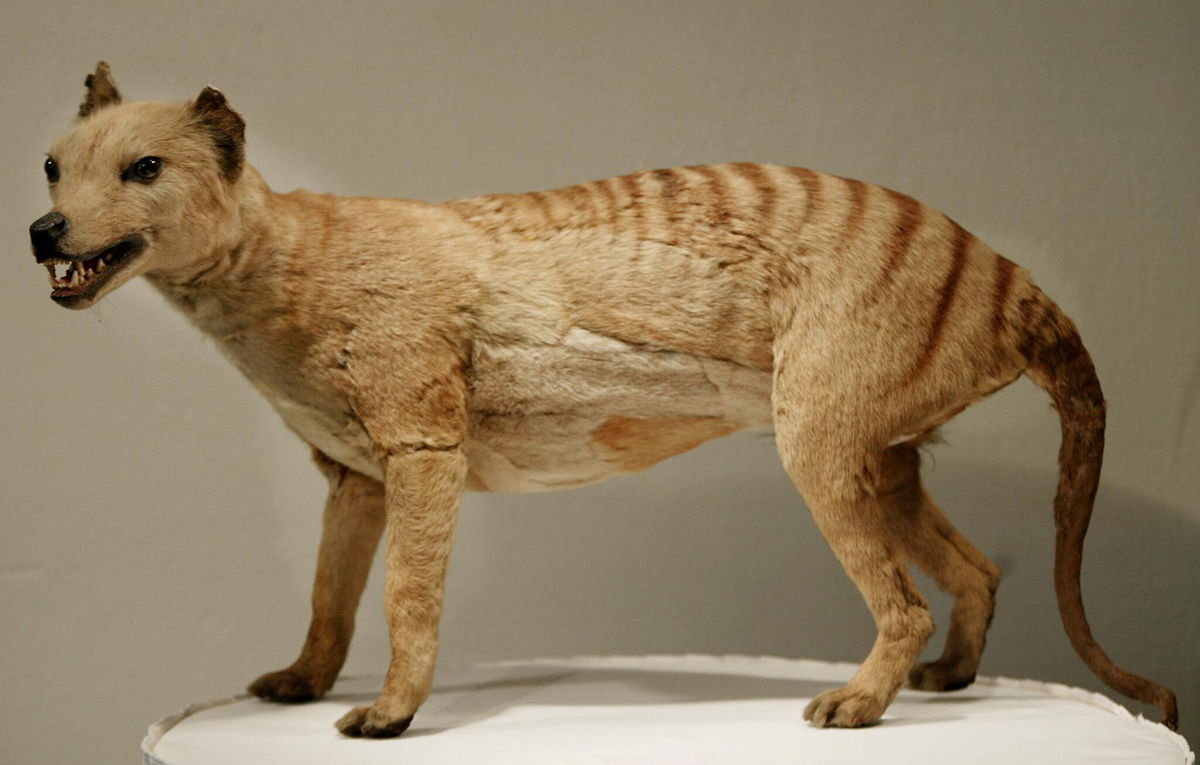Lost remains of last Tasmanian tiger found hiding in plain sight

A thylacine displayed at the Australian Museum in Sydney
By Jessie Yeung, CNN
For decades, nobody knew where the remains of the last thylacine, or Tasmanian tiger, were located.
It turns out they were hiding in plain sight — at the Tasmanian Museum and Art Gallery (TMAG), in the Australian island state, where they had been unidentified for more than 80 years.
About the size of a coyote, the thylacine disappeared about 2,000 years ago virtually everywhere except Tasmania. As the only marsupial apex predator that lived in modern times, it played a key role in the island’s ecosystem, but that also made it unpopular with humans.
European settlers on Tasmania in the 1800s blamed thylacines for livestock losses (although, in most cases, feral dogs and human habitat mismanagement were actually the culprits), and they hunted the shy, semi-nocturnal Tasmanian tigers to extinction.
The last known thylacine was an old female captured by a trapper and sold to a zoo in May 1936, according to a TMAG news release published Monday.
The animal died several months later, with its body transferred to the museum afterward. But the zoo kept no records about the sale because ground-based snaring was illegal — meaning the trapper could have faced a fine, the release said.
That meant researchers and staff at the museum were wholly unaware of the significance of the thylacine in their collection.
“For years, many museum curators and researchers searched for its remains without success, as no thylacine material dating from 1936 had been recorded in the zoological collection, and so it was assumed its body had been discarded,” said Robert Paddle, a comparative psychologist from the Australian Catholic University, in the news release.
After being brought to TMAG, the thylacine’s body was skinned and its skeleton taken apart as part of an education collection, used by museum teachers to explain thylacine anatomy to students, and often transported outside the museum, according to the release.
During that time, most of the world mistakenly thought another thylacine that died at the Beaumaris Zoo in Hobart on September 7, 1936 was the last known individual of its species.
The mistake wasn’t realized until recently, when an unpublished museum taxidermist’s report was discovered. The report, dated 1936-1937, mentioned a thylacine among the specimens worked on that year — prompting a review of all thylacine skins and skeletons at TMAG, where the last thylacine was finally identified.
“It is bittersweet that the mystery surrounding the remains of the last thylacine has been solved, and that it has been discovered to be part of TMAG’s collection,” said TMAG director Mary Mulcahy.
The remains are now on display in the museum’s thylacine gallery for public viewing.
In recent years, the Tasmanian tiger has reappeared in headlines due to ongoing — and controversial — efforts by scientists to bring back the animal through ancient DNA retrieval, gene editing and artificial reproduction.
The-CNN-Wire
™ & © 2022 Cable News Network, Inc., a Warner Bros. Discovery Company. All rights reserved.
